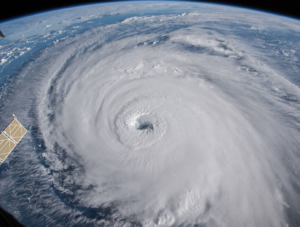For all its challenges, 2022 has been a remarkable year for space. More spacecraft have been placed in orbit than in the first 52 years of the Space Age. Space tourists visited the International Space Station (ISS) aboard the SpaceX Crew Dragon, and the James Webb Space Telescope gave us a look into the very origins of the universe.
But today’s space industry encompasses far more than space exploration. It is a global space ecosystem, composed of integrated systems and stakeholders that contribute to and benefit from space innovation.
| “We envision a whole connected web of people engaged in space, satisfying core economic needs while making the world a better place through collaboration.” – Thomas E. Zelibor, Rear Admiral, USN (Ret.), CEO, Space Foundation |
Today the global space ecosystem is a $469 billion economy that impacts every part of life on Earth. Every community, infrastructure and aspect of modern life is directly dependent on or indirectly affected by space-related technologies.
The ecosystem expands beyond aerospace. Virtually every industry on the planet has advanced as a result of space tech transfer—the commercialization of space technologies for use on Earth—or space tech insertion—the application and integration of space-based technology products and services into established enterprises.
These industries and sectors include, but are not limited to: telecommunications, biometrics and health, transportation, agriculture, environmental assessment and monitoring, public safety, manufacturing, consumer goods, AI, cybersecurity/encrypted applications, energy, national security, data, infrastructure, robotics, hospitality and tourism, banking, supply chain management, advanced materials and more.
Learn More: 10 Industries You Didn’t Know Are Space-Related
The global space ecosystem has room for all.
Space innovation—once the purview only of government agencies and a select group of nations—today thrives through the collaborative work of space agencies, public and private companies, academia and entrepreneurs.
While there are now over 90 countries operating in space, thousands of commercial businesses are rising to take their place in orbit and throughout the global space ecosystem. Commercial space activity far outpaces government space programs in spending and revenues, hitting $362 billion in 2021.
This level of commercial activity will continue to increase as established and emerging companies offer goods, services and space-inspired technologies that fuel space operations, enrich supply chains and add value to people’s lives.
Revolutionary opportunities are available in nearly every industry and sector, including more agile commerce and supply chains, secure communications and data transfer, improved education and health, more productive agriculture, and enhanced national security. Using the lessons learned in the extreme operating environments of space, the space industry has and will continue to pioneer world-changing innovations that move us forward and help us meet our greatest challenges.
There is an immense opportunity to fill the innovation gap and help bring space technologies to market. Thousands of NASA patents await commercialization. Enterprises across a broad spectrum of industries actively seek tech insertion of new commercialized products and services.
In the global space ecosystem, returns on space investment are measured not only in national flags planted on celestial bodies, but in the betterment of life here on Earth.
If you’re interested in growing into or within the global space ecosystem, Space Commerce Institute can help.
Space Commerce Institute at Space Foundation connects you to the growing and dynamic space ecosystem through education, training, mentorship and consultancy. Explore our courses and consulting services now.

